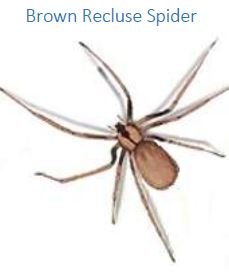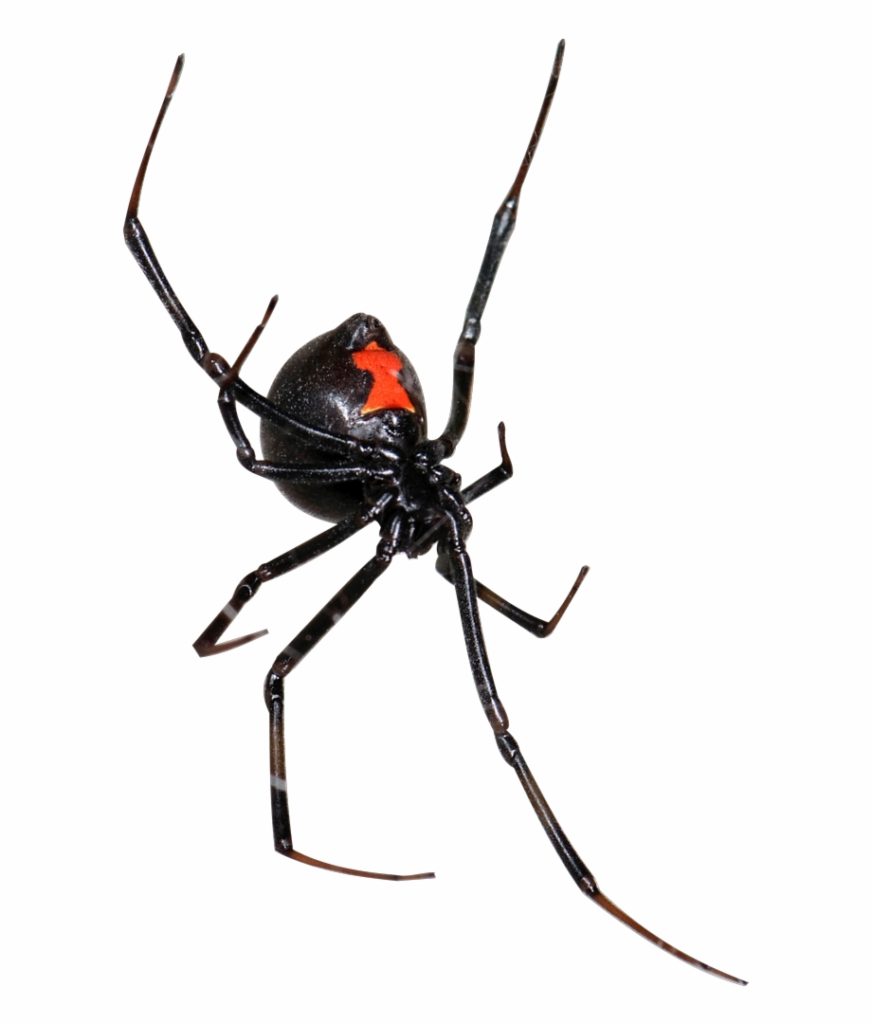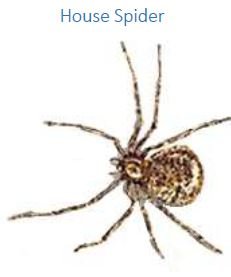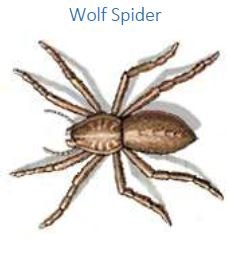The only dangerous spiders we have in Alabama are the Brown Recluse and the Black and Brown Widow spiders. For the most part, spiders are beneficial by eating insects and other spiders.

The Brown Recluse, Loxosceles reclusa, belongs to a group of spiders that is officially known as “recluse spiders”. These spiders are also commonly referred to as “fiddleback” spiders or “violin” spiders because of the violin-shaped marking on the top surface of the cephalothorax (fused head and thorax). These spiders are commonly found in undisturbed areas, typically in garages and storage rooms. These spiders are “reclusive” so finding them running across the floor is uncommon. Be aware of corners and under chairs when cleaning out those “undisturbed areas”.
A mature brown recluse spider will have a well defined, dark “violin” marking on the head with the neck of the violin pointed toward the bulbous abdomen. The abdomen is uniformly colored ranging from light tan to dark brown, and is covered with numerous fine hairs that provide a velvety appearance. The spider has long, thin, brown legs covered with fine hairs, not spines. Adult Brown Recluse spiders have a leg span of about the size of a quarter. The body is typically about 3/8 inch long and about 3/16 inch wide. Male bodies are slightly smaller than females, but males have proportionally longer legs. Both sexes are venomous.

Southern Black Widow, Latrodectus mactans, is a venoumous species of spider in the genus Latrodectus. These spiders are known for their distinctive black and red coloring in the females. The southern widow is indigenous to the southeastern United States. Their webs are made of irregular, tangled, sticky silken fibers. They prefer to nest near the ground in dark and undisturbed areas, like under chairs and in basements.
A mature female will have a body length (excluding legs) of about 8-13 mm, and males are about 3-6 mm. The legs are long in proportion to the body. Females are shiny and black in color with the red hourglass on the under side of her abdomen. Juveniles have a grayish to black color with white stripes. Males may be either purple or have coloring similar to juveniles.
The common house spider, Archaearanea tepidarorium (C.L. Koch), may be the most abundant of the several species of spiders that live in the company of man in the southeastern United States.
The common house spider is yellow to brown with darker rings on the legs. The abdomen is higher than it is long. The males are typically darker and smaller than the females. Females range from 5-8 mm in length, and males are about 4 mm.
Wolf spiders, family Lycosidae, are usually large, hairy spiders that are not associated with webs. They look much worse and scarier than they actually are. They live mostly in solitude and hunt alone, and do not build webs. Wolf spiders are unique in that they carry their eggs on their backs in an egg sac.
The size and look of wolf spiders varies greatly. They can be from only 1/4 inch to 1 1/2 inches in body length, with a leg span of up to 3 inches. The coloring can range from brown (earth tone) with black to white markings. Their long bodies are covered with hair.